Montana
Montana Is Writing the Playbook on How To Deal With China

Montana just took an important step to protect its citizens from authoritarian regimes. By now everyone has heard that the state banned TikTok—and of course TikTok has sued to block the measure. That was two weeks ago. The very same day, Governor Greg Gianforte signed another measure that deserves some national attention. Montana House Bill 946 requires full disclosure of any relationships between Montana’s public universities and entities affiliated with China. The provision fills significant gaps in longstanding federal reporting requirements, but Montana isn’t just improving upon a flawed federal statute. The move also fills a gap at the state level, where the Chinese Communist Party (CCP) has walked unimpeded into American universities and K-12 schools.
The legislation has two key features. First, it requires disclosure of all relationships an educational institution has with China. This requirement is necessarily broad. More narrowly tailored data disclosure requirements would provide universities a road map to steer clear of disclosure altogether.
Second, while the statute’s disclosure requirements are broad, its application is narrow. Universities only have to disclose relationships with “countries of concern” as defined in a federal statute. Those countries are Russia, Iran, North Korea and China—though only China has much in the way of working relationships with America’s universities (and indeed with Montana’s). Universities will certainly feel the reporting burden of the new law, but that burden only applies to relationships with world’s worst authoritarian regimes. Schools will finally be required to think critically about the true origins and connections of their research and educational partners—and reassess whether those relationships are appropriate. In any event, the reporting burden is only as heavy as universities’ relationships with China make it.
For the CCP, Western universities are diamond mines of intellectual property and, at the same time, convenient venues for suppressing criticism of Beijing. Fortunately for the party, funding STEM research naturally helps to suppress critical speech, since a university receiving support from China is reluctant to bite the hand that feeds it.
Stefani Reynolds / AFP/Getty Images
Do U.S. universities hide their relationships with China? One recent story is fairly representative. Last week it was revealed that U.C. Berkeley chose not to disclose to federal authorities a $220 million joint research relationship funded by the city of Shenzhen, China. Berkeley appears to have believed that the partnership’s structure meant that it didn’t have to be disclosed under federal law. Even if technically true, nothing prevented Berkeley from disclosing the money anyway. In any event, the Montana statute clearly requires full disclosure of this kind of collaboration.
But doesn’t our constitutional system give the federal government responsibility for foreign relations? Why should states be passing laws related to these things?
China’s carefully designed system of global foreign influence exploits domestic entities like schools, media outlets, and political parties. The presence of these foreign players inside our domestic institutions has highlighted gaps in our system. If representatives of China’s Confucius Institute program had traveled to Washington, D.C., to seek permission to operate in American schools, they would have searched in vain for an agency with the power to grant or deny that permission. In our federal system, education is rightly local. The U.S. Department of Education provides funding and enforces civil rights laws, but it has no curricular authority. The Department of State’s Bureau of Educational and Cultural Affairs touches education, but its focus is on foreign matters. As a result, CCP proxies deal directly with the states and their schools. Those states have generally been willing partners, perhaps because they don’t think national security or international relations are their problem. It’s an understandable assumption—but it’s not quite right.
All universities and K-12 schools are chartered and regulated by the states in which they operate, and public schools are a product of state budgets and state laws. States manage education, and they need to update their approach to account for contemporary risks. These days, that means pursuing transparency in foreign influence and interference operations so they can collaborate with federal authorities when problems arise. Montana took an important step in the right direction; other states should follow suit.
Dan Currell is a Fellow at the National Security Institute at George Mason University’s Antonin Scalia School of Law and a former Senior Advisor at the U.S. Department of Education.
The views expressed in this article are the writer’s own.

Montana
Female Area Athlete of the Week: Carsten hitting and pitching for Wolverines

WADENA — There is not much Montana Carsten can’t do on the softball field.
The Wadena-Deer Creek junior captain has been dynamite in the pitching circle and at the plate through the first seven games for the Wolverines.
Last week, Carsten recorded three wins in the circle for the Wolverines. She scored nine runs and drove in five runs in six games — all WDC wins.
“When we started practices this year, we kind of saw this new Montana that was ready to go the entire time,” WDC head coach Brooke Umland said. “She was named one of the team captains and she’s really taken on that role for us. She has a seriousness about her and she’s constantly lifting up her teammates. We expected big things from her and she hasn’t disappointed.”
Carsten earned the win in the circle in WDC’s 3-2 victory over Menahga to start the week Tuesday, April 9.
In two games Thursday, April 11, Carsten recorded five hits, scored six runs and drove in two runs as the Wolverines beat Pine River-Backus 14-1 and Staples-Motley 11-1.
“When I get in the box, I just try to hit the ball,” Carsten said. “I try my best to swing at strikes and just get on base as much as I can and score.”
Carsten earned the win in the circle against PRB. In a doubleheader sweep of the Pillager Huskies Friday, April 12, Carsten allowed two hits in a complete-game Game One shutout. Carsten also went 3-for-4 with a double and three runs scored for the Wolverines in a 12-0 win.
Carsten finished the week by allowing one earned run in a 10-6 win against Parkers Prairie Monday, April 15.
“I was just throwing strikes and just trying to be consistent,” Carsten said. “I know my defense will make plays behind me.”
Carsten holds a 1.03 ERA in the circle and a .637 batting average at the plate.
“Her confidence, whether it’s in the circle or in the box, she expects to do well,” Umland said. “She goes up there and she’s producing for us in all aspects of her game.”
Carsten slots in as the No. 2 hitter in W-DC’s batting order.
“She’s one of our leaders in RBIs because our leadoff hitter is doing a great job of getting on ahead of Montana,” Umland said. “She is doing a great job at the No. 2 spot.”
Hitting at the top of the lineup helps Carsten with her confidence.
“I know there are some big hitters behind me that I know can drive me and my teammates in,” Carsten said.
In the circle, Umland is impressed most by Carsten’s control. In five games, Carsten has walked two batters.
“Even when she is down in the count she can come back and strikout out a batter,” Umland said. “When she’s throwing well, she is pretty much unstoppable with the defense behind her. She trusts them and they trust her.”
Carsten added she tries to aim for the catcher’s glove when pitching — nothing fancy.
“I’ll start with a couple of fastballs and then try to throw either a drop ball or change-up,” Carsten said. “The fastball is probably my best pitch. I feel like I’ve improved on being really consistent and not walking many girls. I just try to get them to hit, so we can get the outs.”
Having Carsten in the circle gives Umland all the confidence in the world as a coach, too.
“When someone commands the strike zone like she is right now you have to go with her,” Umland said. “When you have someone throwing like that our confidence gains more and more every game. She is definitely a tone-setter for us.”
Other notable performances:
Softball: Keira Bertram, Bertha-Hewitt/Verndale, went 6-9 with two doubles.
Kendra Melby, Pierz, 6-8 with three doubles and seven RBIs in two games last week.
Abby Palm, Aitkin, went 6-7 with five RBIs.
Jada Dykhoff, Wadena-Deer Creek, blasted a grand slam against Pillager.
Golf: Genevieve Birkeland, Pequot Lakes, was the medalist for the Granite Ridge Conference meet at Stone Creek Golf Course.
Year: Junior
School: Wadena-Deer Creek
Sport: Softball
Position: Pitcher
Highlights: Montana Carsten recorded eight hits, nine runs and five RBIs across six games. She picked up four wins in the circle.
Montana
Montana Grizzlies' Evan Todd breaks program javelin record
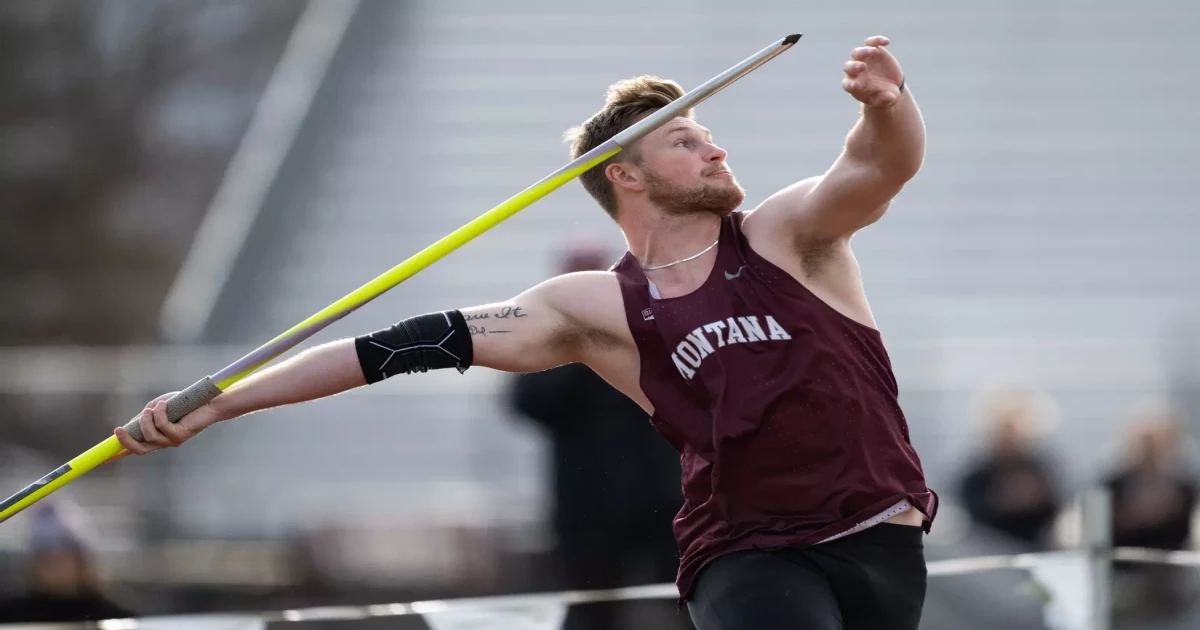
(Editor’s note: University of Montana news release)
MISSOULA — There has been a sense for a few years now that the Montana men’s javelin school record was not safe. Evan Todd, the two-time defending Big Sky Conference champion in the event, has had it in his sights since arriving on campus.
Last week, Todd hit 70 meters for the first time in his career, but came up inches short of Jensen Lillquist’s 2019 record of 232-6. On Friday afternoon, in what may be his final event at his home venue and in blistering winds, Todd made history.
His second throw of the day carried 71.45 meters, or 234 feet and 5 inches, to set a new program record.
“It felt great. It was a long time coming, I’ve been waiting on that throw for a while,” Todd said.
The crowd at Dornblaser provided him with a clap as he made his approach. The first throw of the day had power, but was turned a bit sideways in the wind and came down quickly. He had no such problems with the second attempt.
He dove to the ground on release. When he looked up and saw the flight, he shouted “get out there,” and his javelin listened. When the distance was announced, Todd, his teammates and coaches, and all those watching erupted into cheers.
There were hugs all around, including to Todd’s family who had traveled down from Kalispell to watch him compete at home one final time.
“It was awesome. I’m so glad they were able to make it,” Todd said. “During the week, I was talking with my coach and thinking whether it was smart for me to throw or not. I knew I wasn’t going to be able to throw at my last home meet so I wanted to give it one last hurrah. It’s super fulfilling to finally get that, and crazy to do it in my last meet here.”
He had a sense that it would be a new record when he saw it land, but still had to wait for the official word. He stood off to the side and waited for the official measurement. 71.45 meters.
“Once I heard 71, I knew it was a record,” Todd said. “I threw it, looked up, and could see that it was still fishtailing up there so I knew it had some serious power. I knew it was a big one.”
The senior has been a leader on Montana’s team for several years now and had checked off nearly every box possible in his javelin career. Now, he gets to add yet another accolade to his impressive resume.
“Great things happen to great guys, and he’s one of the great guys,” head coach Doug Fraley said. “He’s a tremendous leader on our team and I’m just really proud of him for breaking that school record here in what will likely be his last meet at Dornblaser. To see his parents come up and give him a hug as soon as the distance came up on the board, that’s a really special thing for a family.”
Todd was one of three Grizzlies to win an event on the first day of competition of the Montana Open. The men’s and women’s hammer and javelin events were contested on a cool, windy afternoon in Missoula.
Ariel Clark opened up the day with a dominant win in the women’s hammer. Clark threw 184-10 to win, and freshman Morgan Thomas finished fourth with a PR throw of 152-8. Freshmen Scout Nadeau and Mary Mickelson also had season-best throws in the hammer.
In the women’s javelin, Lea Moose topped a 15-athlete field with a throw of 142-7. In the same stiff headwind that Todd faced, Moose missed out on her personal record by just two inches. It’s a season best for Moose and moves her into the top 80 in the West qualifying region.
Ashley Carroll had a PR in the event with a throw of 131-5.
Walker McDonald had a big throw in the men’s hammer to finish second in the field. McDonald set a new PR with a mark of 184-11, and had two throws that beat his previous career best mark.
Todd provided the big highlight of the day in the final competition, but Everett Fred also finished fourth with a throw of 189-1. Porter Coffield, who is training for the decathlon at the Big Sky Championships, set a new PR with a throw of 163-1.
“It was really a fine day for our throws crew in both the hammer and javelin. Coach Kolb is doing a really good job bringing that crew along and we got off to a really good start to our Montana open today.”
The bulk of the meet will be on Saturday with field events starting at 11:00 a.m. and track events beginning at 11:20 a.m.
Men’s Javelin- Evan Todd (234-5^, 1st), Everett Fred (189-1, 4th), Porter Coffield (163-1, 8th)
Men’s Hammer- Walker McDonald (184-11*, 2nd), Wade Rykal (151-11, 5th), Alex Shields (139-6, 9th)
Women’s Hammer- Ariel Clark (184-10, 1st), Morgan Thomas (152-8*, 4th), Scout Nadeau (147-6*, 6th), Mary Mickelson (145-4*, 7th), Molly O’Dell (139-0, 9th)
Women’s Javelin- Lea Moose (142-7, 1st), Ashley Carroll (131-5*, 5th), Tatum McNamara (108-2, 11th), Brooke Stayner (79-9, 15th)
^School Record
Montana
These 8 Towns in Montana Have Beautiful Architecture
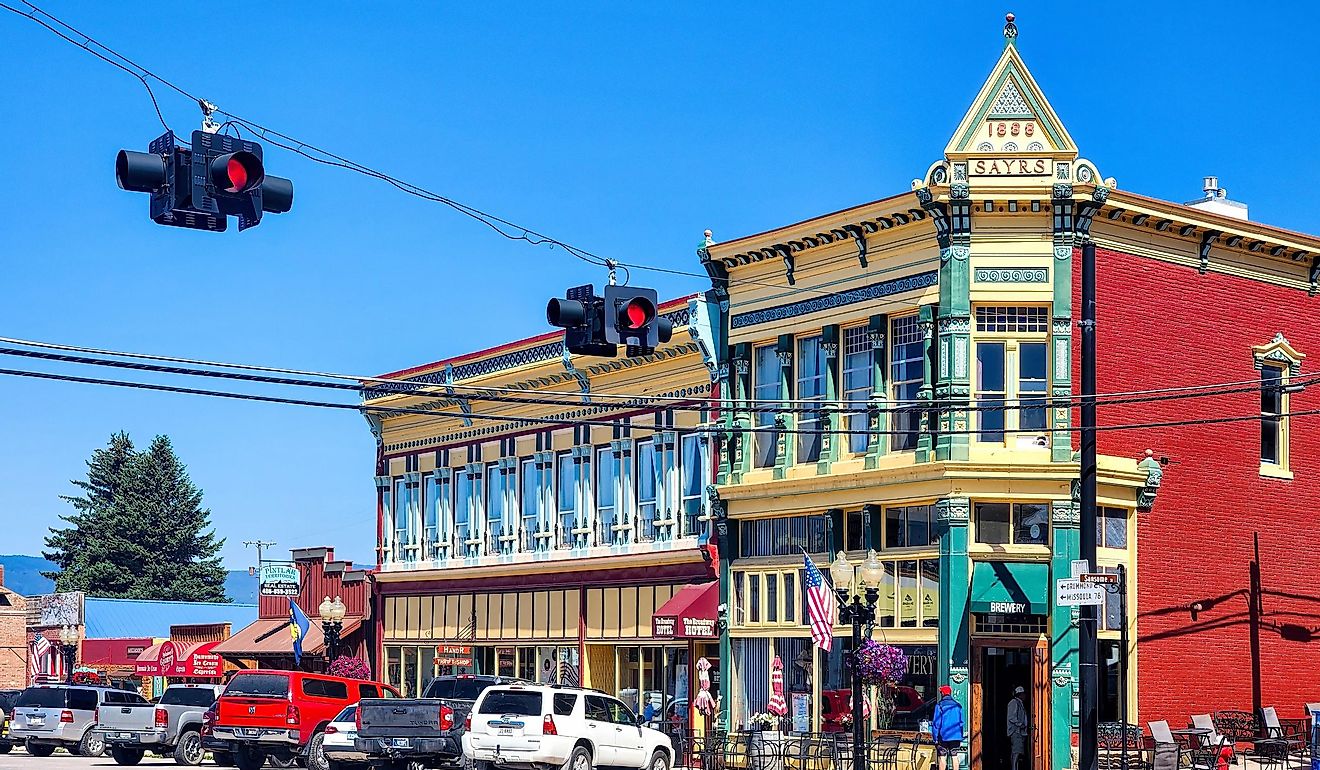
Montana is known for its alluring, rugged landscapes, with roots in mining and ranching. But these small towns are rich in more than just silver and copper; each brick and stone that built this vast state uncovers a rich past integral to the country’s foundation.
Whether visiting Stevensville to witness the first traces of Montana’s European settlement, journeying through Helena—a town once home to the most millionaires in the world per capita, or exploring “The Richest Hill on Earth,” these towns all have their own stories to tell, told through historic buildings and districts that continue to inspire and intrigue visitors today.
Butte
Considered by many as Montana’s most historic city, Butte was once the largest city west of the Mississippi River. The town, known as “The Richest Hill on Earth,” had rich beginnings in mining; shortly after being founded as a mining camp in the 1860s, it grew to become the U.S.’s largest copper producer.
Today, its Victorian-style business district and the numerous mansions in the area preserve much of the town’s heritage. Among the most charming and impressive of them is the Copper King Mansion, named after one of the state’s “copper kings,” William A. Clark. Today, it serves as both a museum and a bed and breakfast. Built in 1884, this mansion demands attention with its 34 rooms, looming rooflines, stained-glass windows, and frescoed ceilings.
Another structure tied to William A. Clark’s legacy is the Clark Chateau, built for his eldest son in 1898. This 13,000-square-foot Chateau, inspired by the French countryside manors of the Old World, rises four floors and contains 26 rooms and seven fireplaces. Its grand, gothic presence would not feel out of place in a Charlotte Brontë novel.
Livingston
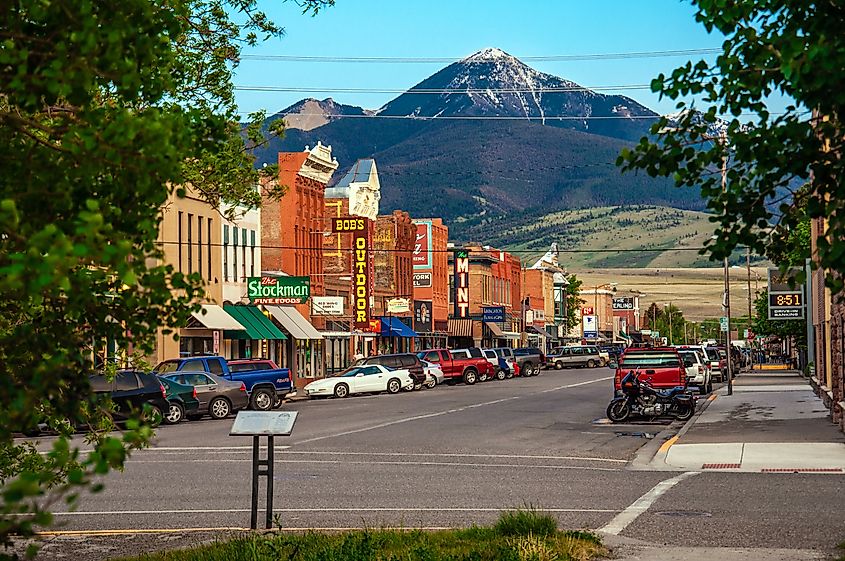
Livingston is hunkered down atop the mighty banks of the Yellowstone River and offers endless activities. From avid outdoors enthusiasts to ardent art connoisseurs, this town has something for everyone.
When strolling along the wide streets of the picturesque downtown area, visitors and locals alike are taken aback to a bygone era. Cafes, restaurants, and art galleries—many featuring some of the most notable Western artists—line the streets, making for the perfect night on the town.
One building that always catches the eye of visitors is the Livingston Depot. Built in 1882, this historic railway station was later redesigned to keep up with the increasing number of passengers on their way to Yellowstone National Park. Notably, Reed & Stem, the same architects who designed New York’s Grand Central Station, developed the updated version. Today, it exists as a museum in which visitors can relive Livingston’s rich history through events and exhibits.
Philipsburg
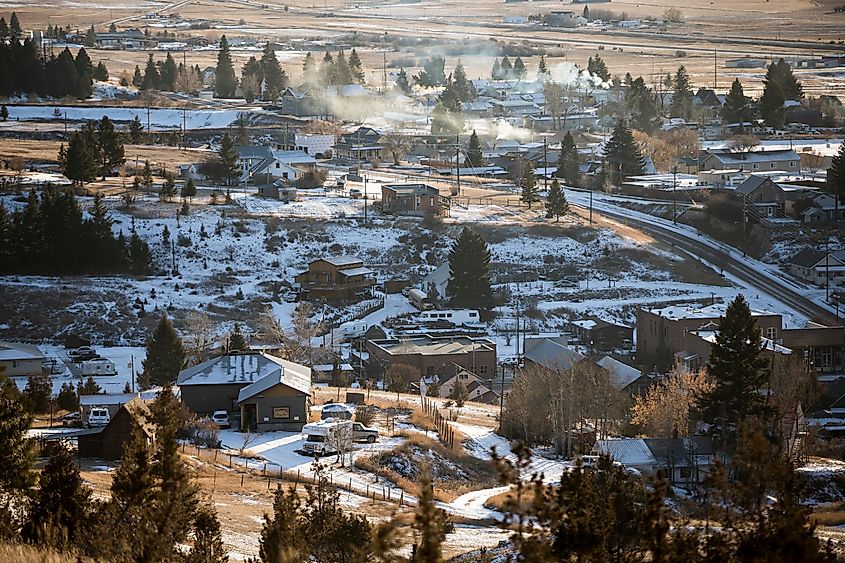
This 1890s mining town has survived to become one of Montana’s most impressively restored communities. Unsurprisingly, its attention has led to awards such as Sunset Magazine’s “Best Municipal Makeover and Reinvention.”
Charming late-nineteenth-century shops, museums, cafes, and restaurants dating back to the booming silver mining age preserve this historic district. In 1864, after initially discovering silver in Philipsburg, the town was reported to have begun to grow at the “rate of one house per day.”
Some notable historic buildings listed on the National Register include the Philipsburg School, the Queen Anne-styled Granite County Jail—with its imposing medieval-styled tower pointing straight to the vast Montana sky, and the Classical Revival-styled Granite County Courthouse—constructed of meticulously cut Montana granite. For a spectacular view of the town, you can climb the hill above the courthouse and see Philipsburg for all its preserved beauty.
To quench your thirst after a long day of exploring, feel free to stop by the Philipsburg Brewing Company located in one of the town’s distinctly historic, colorful, and ornate buildings. This one cannot be missed: just look for “BREWERY” in large gold lettering on its glass windows.
Hamilton
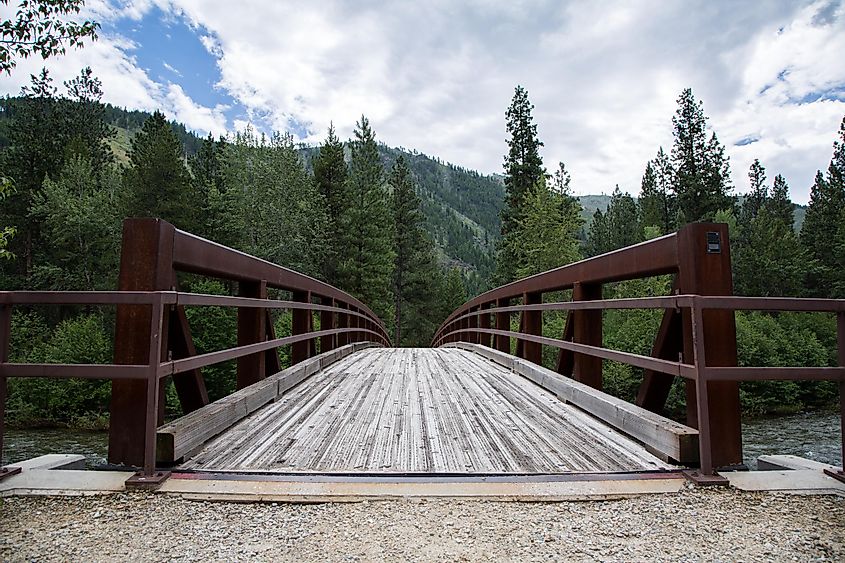
Like Philipsburg, this town will make you feel like you have gone back in time with its pristinely preserved architecture and historical vibe, having any visitor feel like they are a part of something truly remarkable.
Hamilton’s downtown Commercial District is on the National Register of Historic Places and includes some of Montana’s most impressive 19th-century buildings.
The Daly Mansion once belonged to one of Montana’s famous “copper kings,” Marcus Daly, who purchased the property in 1886 as a summer home. The mansion has over 50 rooms, which can be seen by booking a guided tour.
What was once the Ravalli County Courthouse is now a museum built in 1900. Fortunately, this magnificent building was saved from a wrecking ball in 1979 and continues to be one of Montana’s most opulent museums, offering many unique historical exhibits and collections.
Stevensville

In 1805, Lewis and Clark strolled down what is now Main Street in Stevensville on their journey through the Northwest. Later, in the 1840s, Jesuit missionaries worked with the Bitterroot Salish Tribe to build a small church, which still stands today as part of St. Mary’s Mission & Museum, “where Montana began.”
Some buildings, such as the Odd Fellows Hall, built in 1912, have been listed as individual entries in the National Register. Other entries, however, document entire areas of the town; Stevensville’s charming, well-preserved historic residential neighborhood is listed as a National Register historic district.
“The Thornton,” also known as The Stevensville Hotel, was built as a hospital in 1910 and operates today as a cozy, period-accurate hotel. Visitors delight in watching the sun rise over the Bitterroot Mountains from the comfort of the hotel’s porch. So, feel free to pour yourself a warm cup of coffee, pull up a rocking chair, and experience this magnificent view for yourself.
Helena
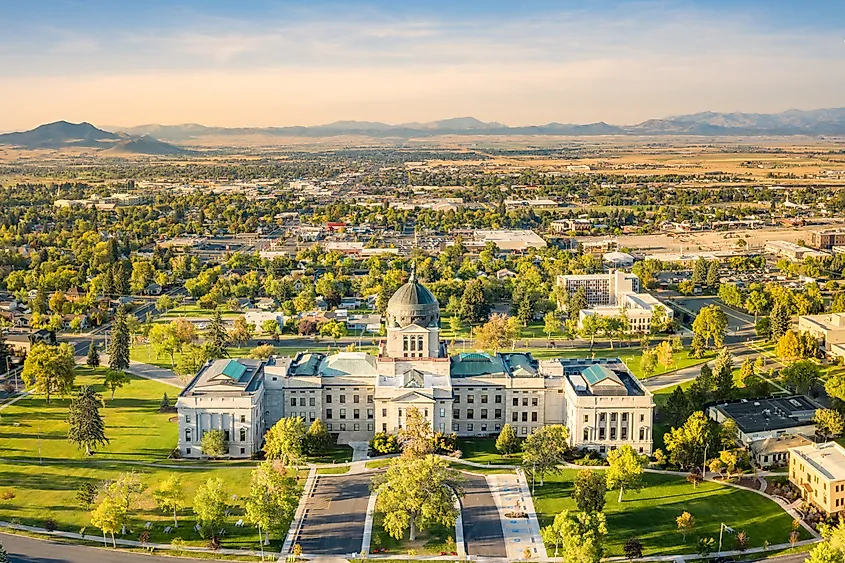
Helena, Montana’s state capital, is home to several museums and historic sites that offer visitors an authentic experience while exploring the historically rich area. Visitors can fill their days touring microbreweries, walking trails, observing art galleries, and dining at some of Montana’s finest restaurants—such as Lucca’s, an Italian restaurant awarded The Best Restaurant in Montana three years in a row by Business Insider magazine.
Among the many must-see areas in Helena is the picturesque Mansion District, which is exactly as it sounds. Sightseers love taking walking tours, weaving through these historic streets lined with tall trees, stone walls, and fresh-cut grass to witness the grand mansions that inhabit the area. A notable building in this district is the Original Governor’s Mansion, a Queen Anne-styled mansion built in 1888 by William Chessman to symbolize this wealth and influence.
In 1904, A.O. Von Herbulis built The Cathedral of St. Helena to equal the grand cathedrals of Europe. Visitors cannot miss this amazing feat of Vienna-inspired architecture for a taste of European culture right here in Montana. Another sight not to be missed is the Montana State Capitol. Here, visitors revel in a building that perfectly captures Montana’s rich history, art, and classical architecture.
Deer Lodge
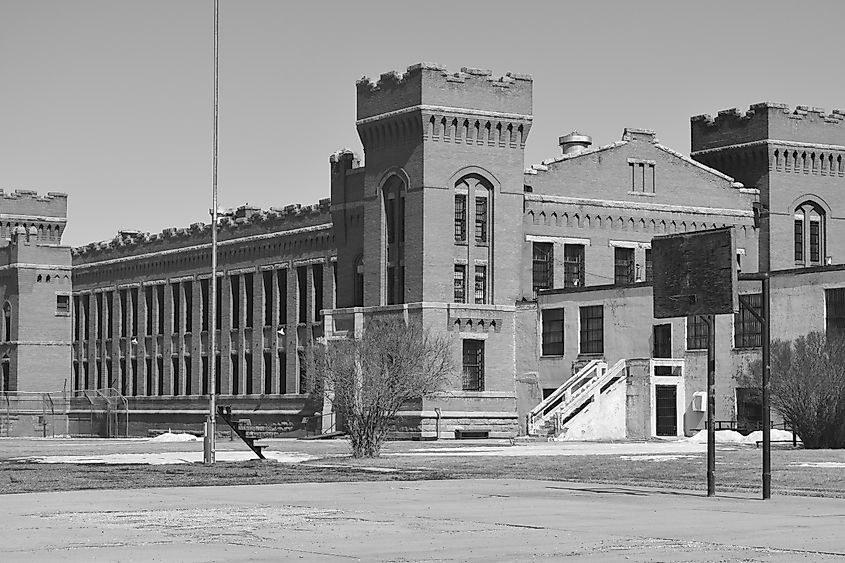
Surrounded by stunning mountain ranges on both sides, this meadowland offers visitors several opportunities to discover a historic past infused with a welcoming vibe from the locals. For those interested in the area’s history, no other town in the Northwest contains as many museums as Deer Lodge.
Although Deer Lodge began as a mining town, it has grown to become a significant center of agriculture. Perhaps showcasing this area’s agricultural roots best is the Grant-Kohrs Ranch National Historic Site. Visitors can live like cowboys of the past as they explore the expansive land, walk through the narrow bunkhouses, and hang out among real Rangers to learn about life on the ranch.
Deer Lodge is best known for one of the most unique structures in Montana, and perhaps even the country—the Montana State Prison. Now a collection of museums, this structure has 24-foot-high sandstone walls and medieval-styled turreted towers, giving the complex an intimidating and imposing feel. You can take a tour from the dreary Cell House, through the slide bar cells, to the Maximum-Security black box. Impressively, the complex contains five museums: the Old Montana Prison, Powell County Museum, Frontier Montana Museum, Yesterday’s Playthings, and the Montana Auto Museum.
Anaconda
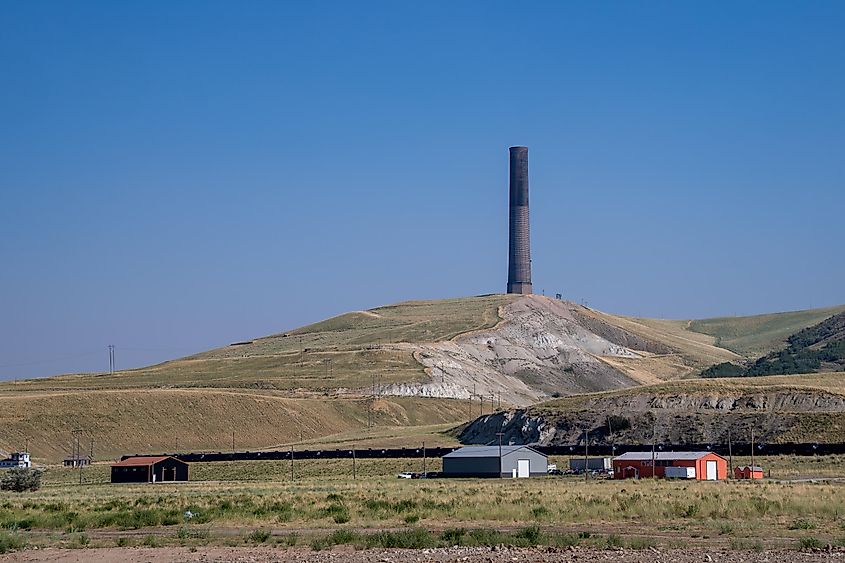
Anaconda was born out of the need for a smelter to support Butte’s increasing supply of copper ore. Between 1883 and 1889, Marcus Daly built the world’s largest smelter here. Although smelting operations ceased in 1980, “The Stack,” still one of the tallest free-standing brick structures in the world, remains a landmark and state park overlooking the town.
There are 30 locations listed within the Anaconda Commercial Historic District. The Deer Lodge County Courthouse is a gloriously imposing building that dominates the skyline with its rising dome and looming stone walls. Likewise, the Copper Village Museum and Art Center—Anaconda’s former City Hall—is a High Victorian-styled complex that contains not only a museum but also an art center, archives, and a retail shop perfect for those wanting to get lost in the history of Montana without having to go far.
The Washoe Theater is another must-see. The building demands respect, with its lavish Art Deco furnishings, murals, and ornamental work made of silver, gold leaf, and, of course, a lot of copper. The theater has been considered a historic site on the National Register since 1982.
Whether you want a taste of European culture right here in the US or seek something more distinctive to the country’s roots, these small towns have it all. Some of the most important buildings and structures integral to the country’s beginnings exist in Montana. And besides, how many other places in the world can you find a Gothic-Revival style cathedral only a few hours from a small missionary church symbolizing the foundation of the state?
-

 Politics1 week ago
Politics1 week agoWhat to know about the Arizona Supreme Court's reinstatement of an 1864 near-total abortion ban
-

 Politics1 week ago
Politics1 week agoHouse Republicans blast 'cry wolf' conservatives who tanked FISA renewal bill
-

 News1 week ago
News1 week agoVideo: Biden Hosts Japan’s Prime Minister at the White House
-

 World1 week ago
World1 week agoRomania bans gambling in small towns
-
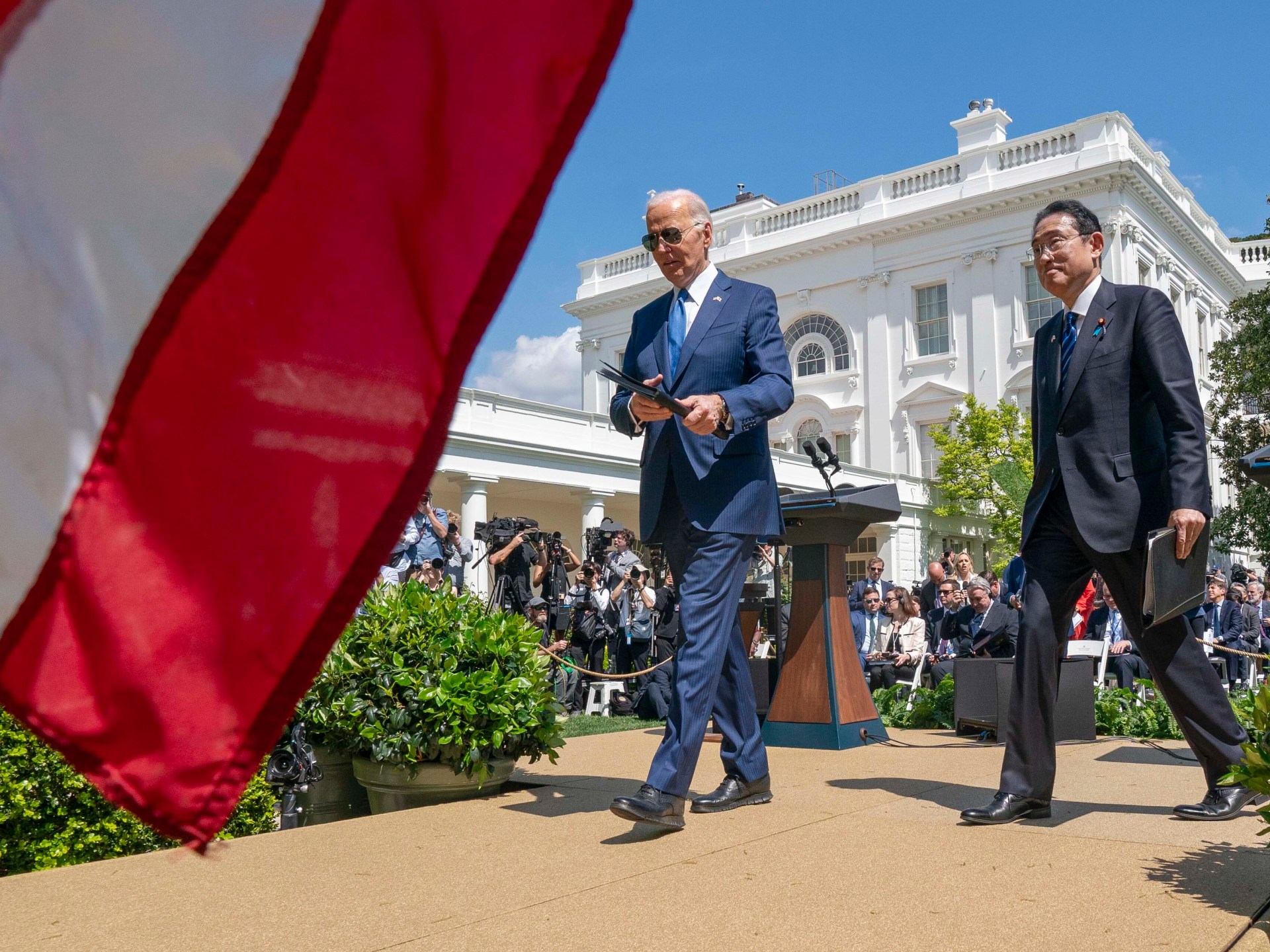
 World1 week ago
World1 week agoBiden, Japan leader Kishida announce stronger defence ties in state visit
-
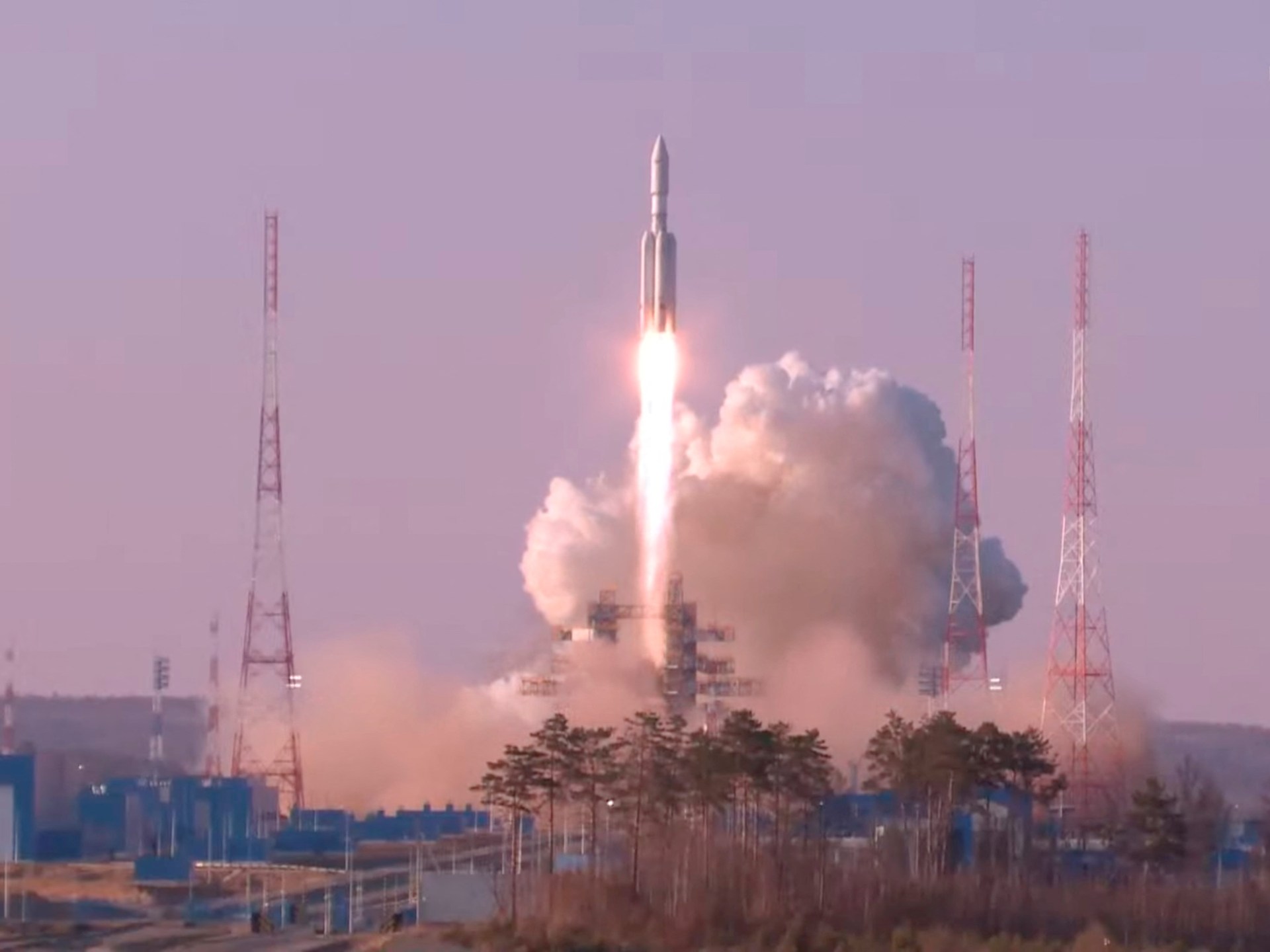
 World1 week ago
World1 week agoRussia’s Angara A5 rocket blasts off into space after two aborted launches
-

 Politics1 week ago
Politics1 week agoTrump raises millions in ritzy Atlanta neighborhood that wants to secede over violent crime
-

 Politics1 week ago
Politics1 week agoTrump defense challenges jury selection in criminal hush money trial
















